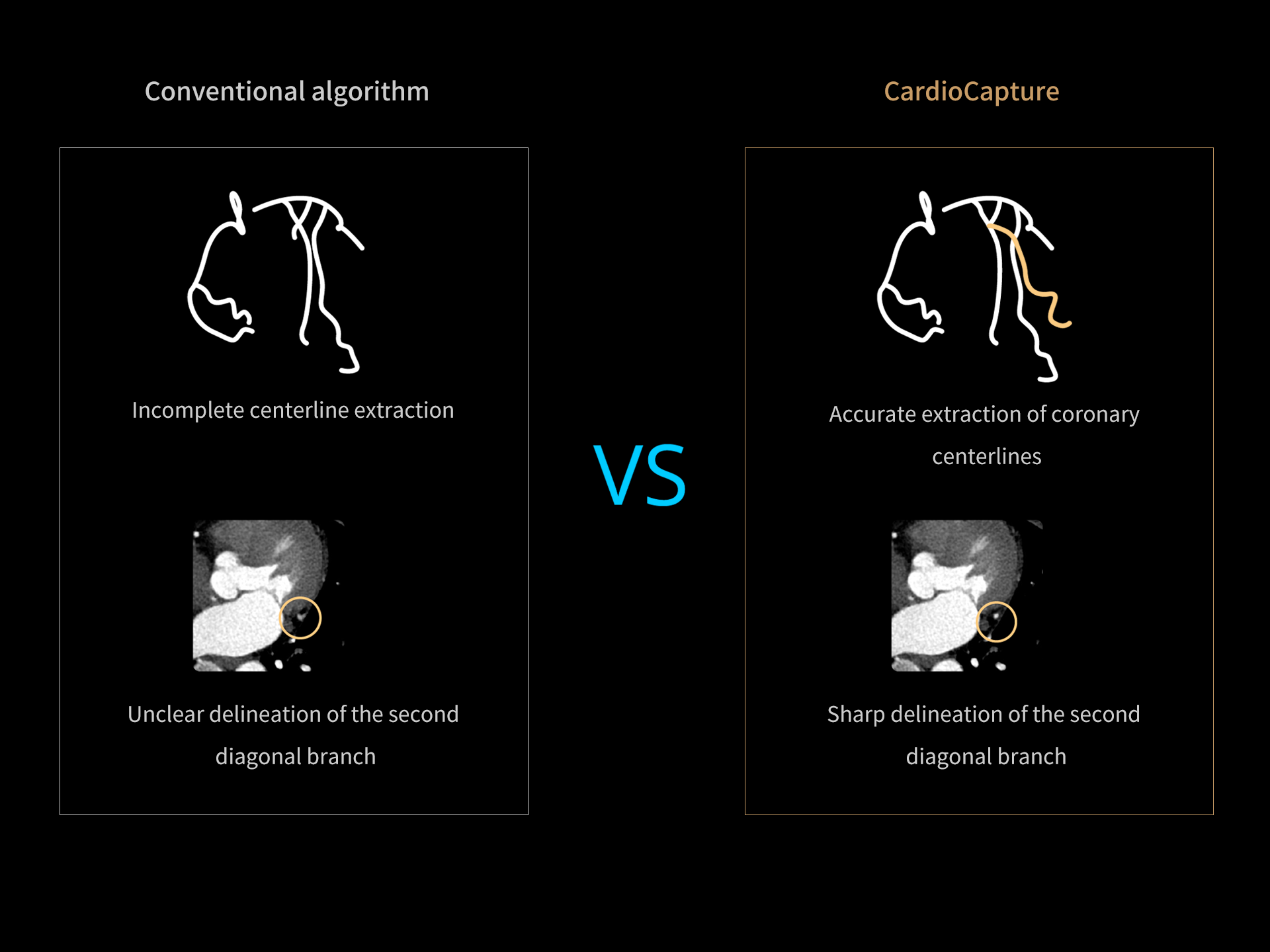Capture more details with precise AI extraction

Cardiac CT is essential for non-invasive coronary artery assessment, but it remains inherently challenged by motion artifacts, as heart movement varies with patient conditions. Although hardware advances—such as faster rotation speeds and wider detector coverage—have improved image quality, limitations persist, particularly in cases of high or irregular heart rates. These challenges highlight the need for a smarter approach that extends beyond hardware.
The integration of artificial intelligence offers a practical advancement, helping CT systems overcome motion-related limitations and realize their full diagnostic potential. CardioCapture, an AI-powered algorithm, actively corrects motion artifacts, delivering consistent image quality and improving clinical efficiency.
From Hardware to Intelligence: CardioCapture Tackles Residual Motion in Coronary CT Imaging





